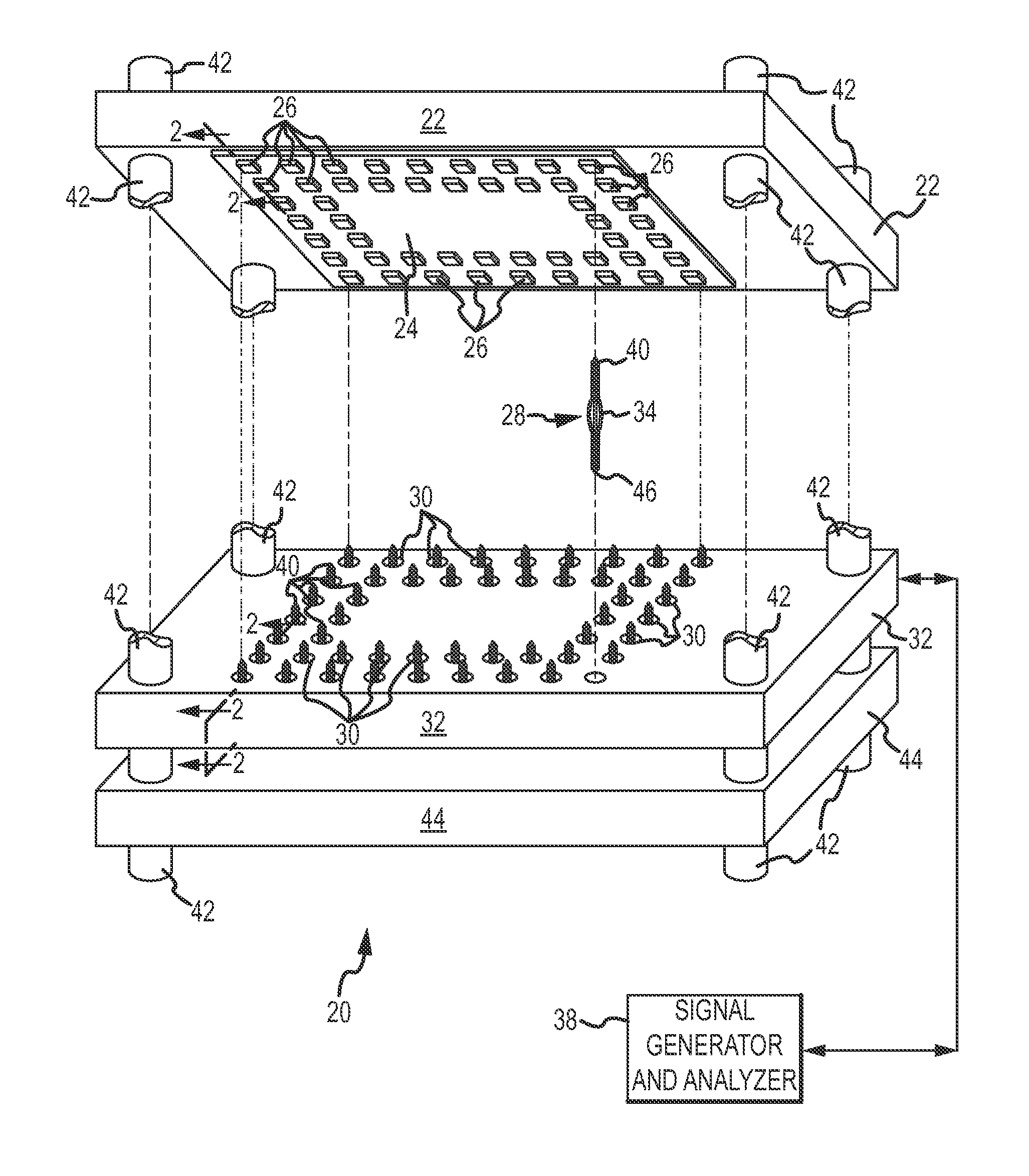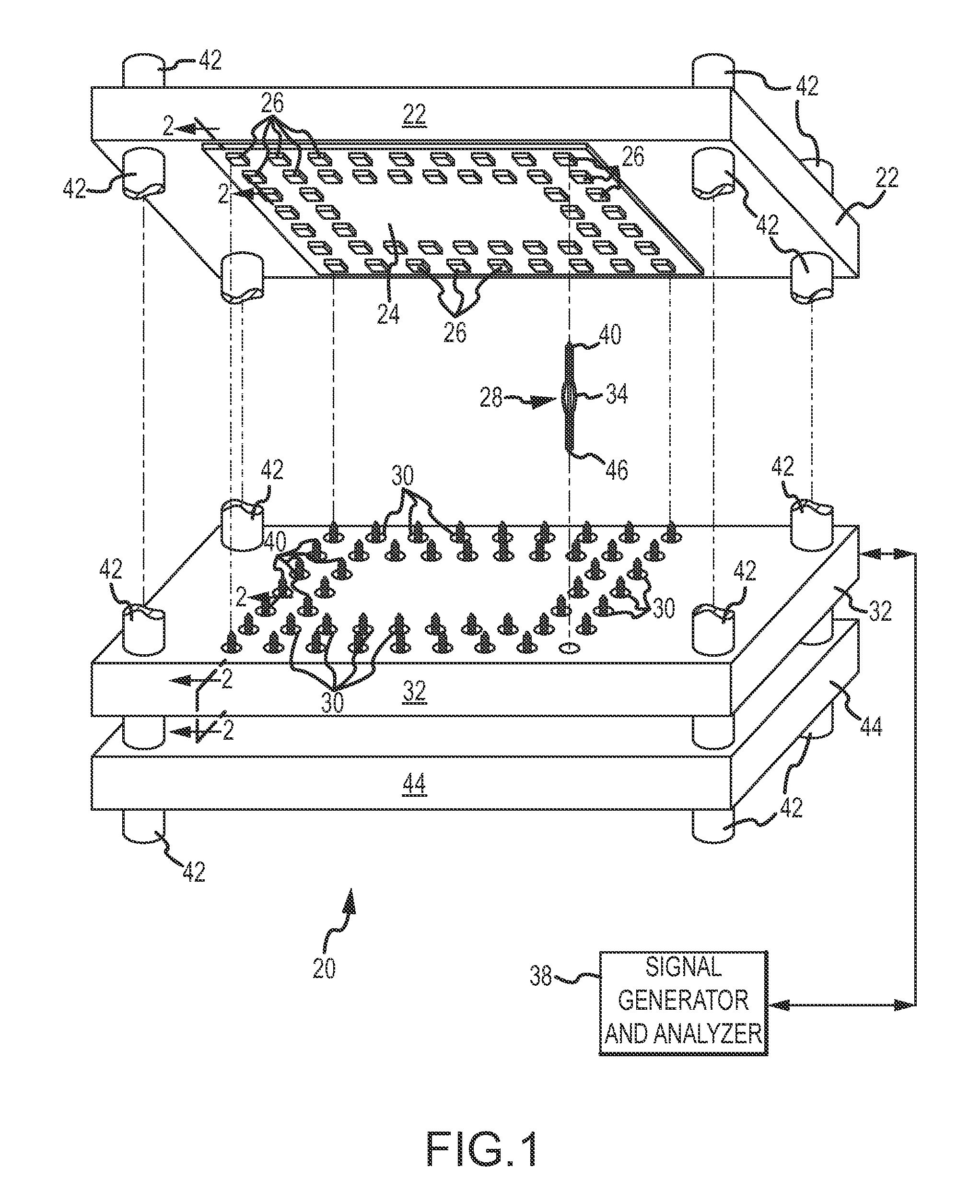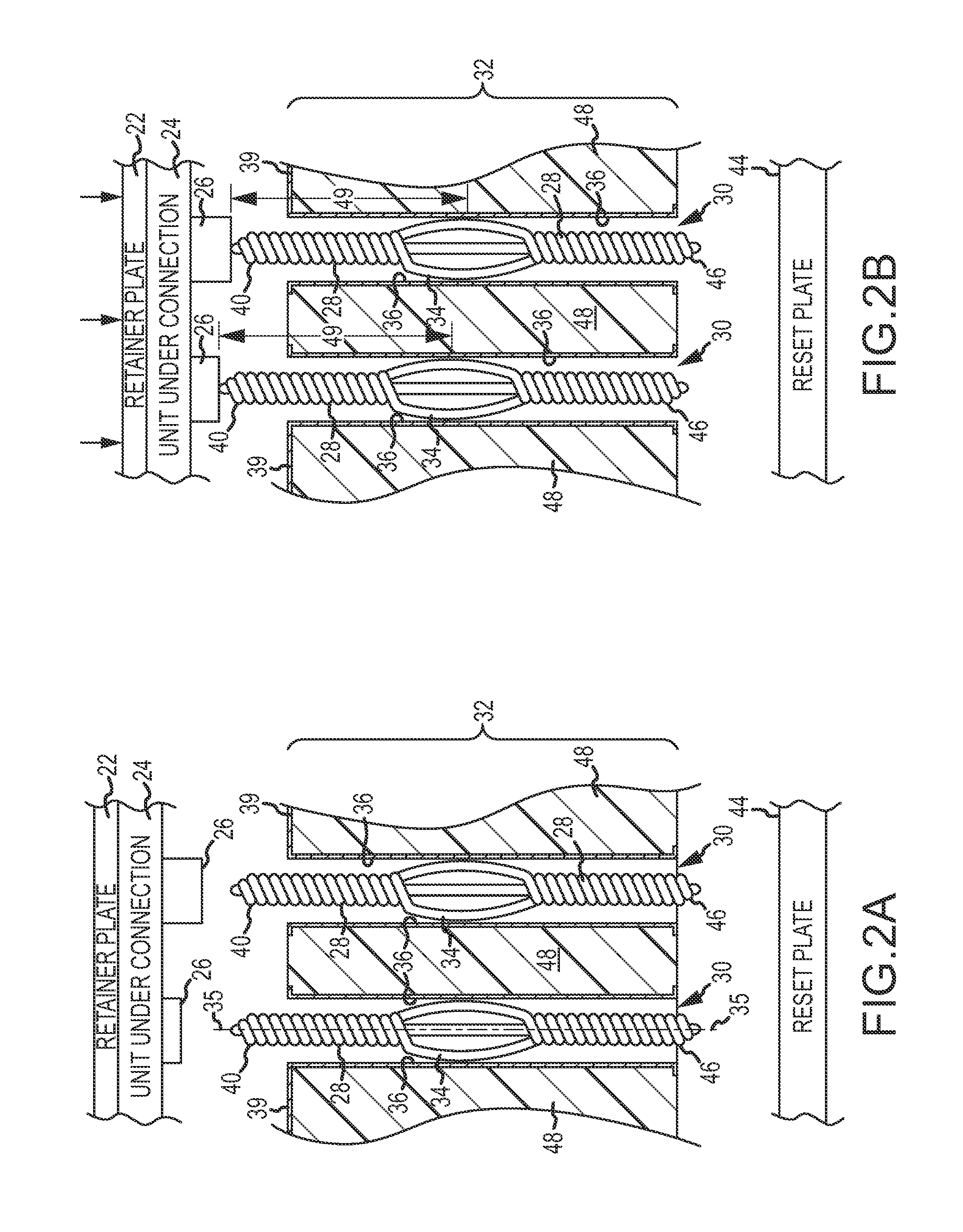Interconnection Interface Using Twist Pins for Testing and Docking
a twist pin and interconnection interface technology, applied in the direction of coupling device details, coupling device connection, instruments, etc., can solve the problems of significant risk of a new chip being defective, chip level testing is difficult, and the twist pin has not been used in interconnection interface testing of high-performance integrated circuits. , to achieve the effect of eliminating differential force distribution, minimizing or eliminating anomalous signal effects, and eliminating differential force distribution
- Summary
- Abstract
- Description
- Claims
- Application Information
AI Technical Summary
Benefits of technology
Problems solved by technology
Method used
Image
Examples
Embodiment Construction
[0036]The present invention may be advantageously incorporated in an interconnect interface having the generalized characteristics illustrated in FIG. 1. The interconnect interface is exemplified by a test socket 20 which includes a retainer plate 22 that holds and positions a unit under connection (UUC) 24. The UUC 24 may be a semiconductor or integrated circuit chip (illustrated), a package or device, a printed circuit board, electronic components or other electrical or electronic products (none shown). Each UUC 24 will have contact pads 26, or other contact surfaces or terminals, located on it by which to receive electrical power, electrical reference potential and input signals to the UUC and from which to deliver output signals from the UUC in response to the input signals.
[0037]Twist pins 28 are an important part of the interconnect interface exemplified by the test socket 20. The twist pins 28 conduct the input signals to the contact pads 26 of the UUC 24 and receive the outp...
PUM
 Login to View More
Login to View More Abstract
Description
Claims
Application Information
 Login to View More
Login to View More - R&D
- Intellectual Property
- Life Sciences
- Materials
- Tech Scout
- Unparalleled Data Quality
- Higher Quality Content
- 60% Fewer Hallucinations
Browse by: Latest US Patents, China's latest patents, Technical Efficacy Thesaurus, Application Domain, Technology Topic, Popular Technical Reports.
© 2025 PatSnap. All rights reserved.Legal|Privacy policy|Modern Slavery Act Transparency Statement|Sitemap|About US| Contact US: help@patsnap.com



